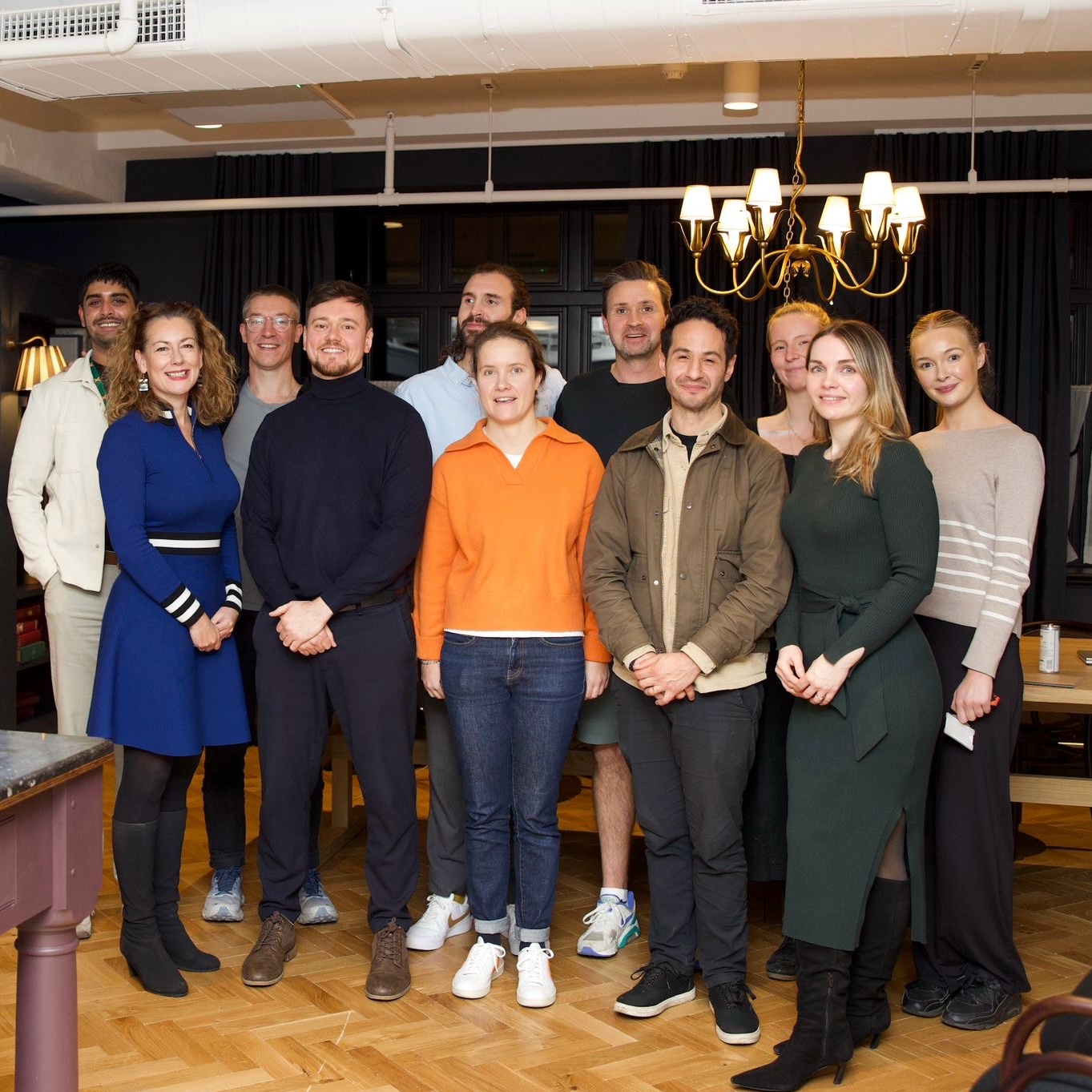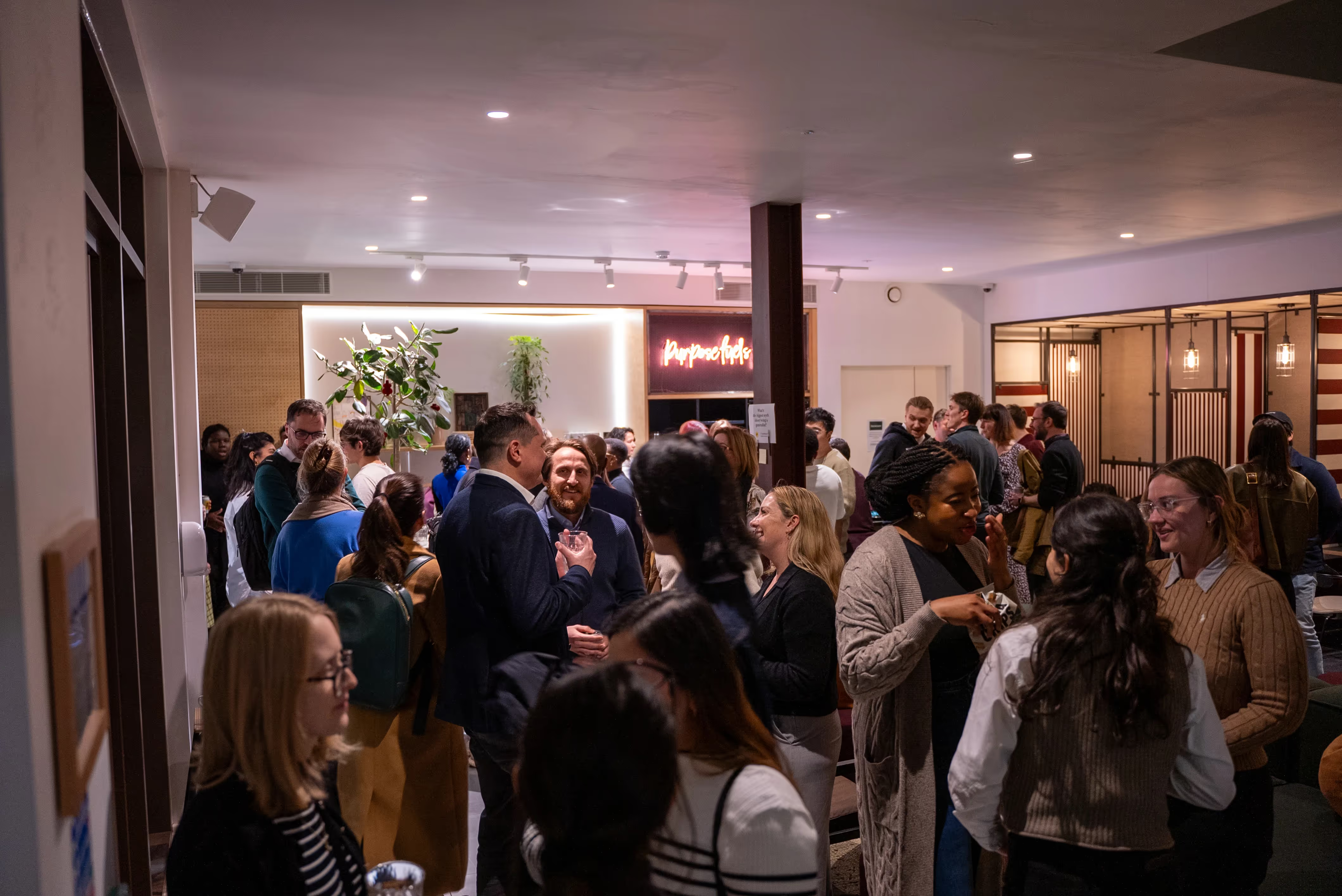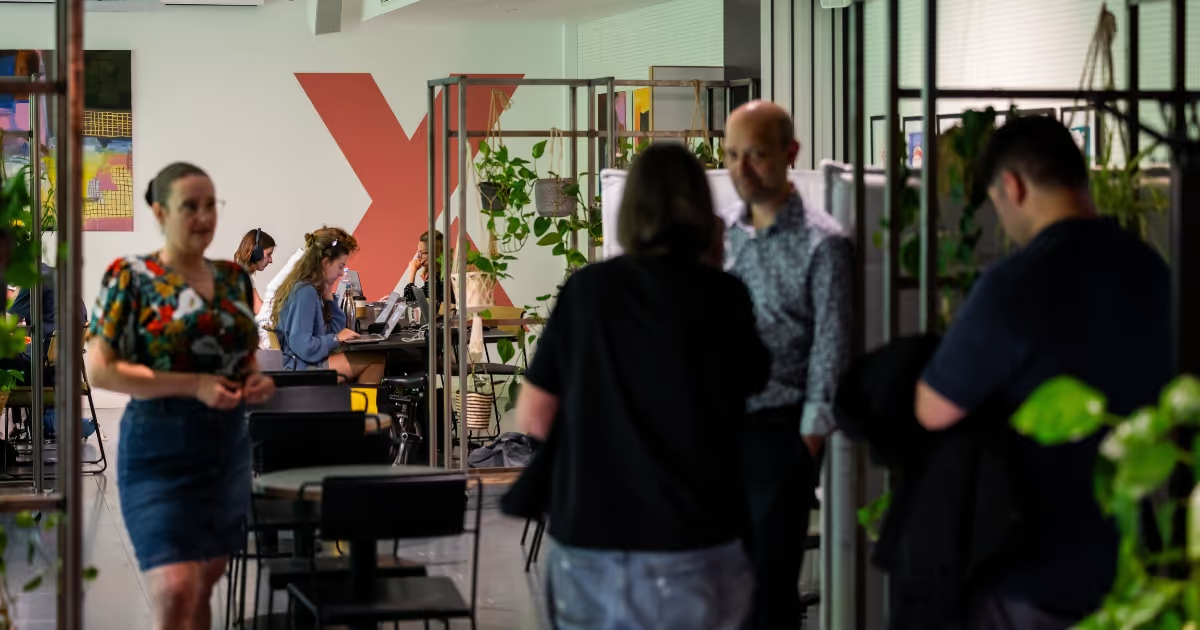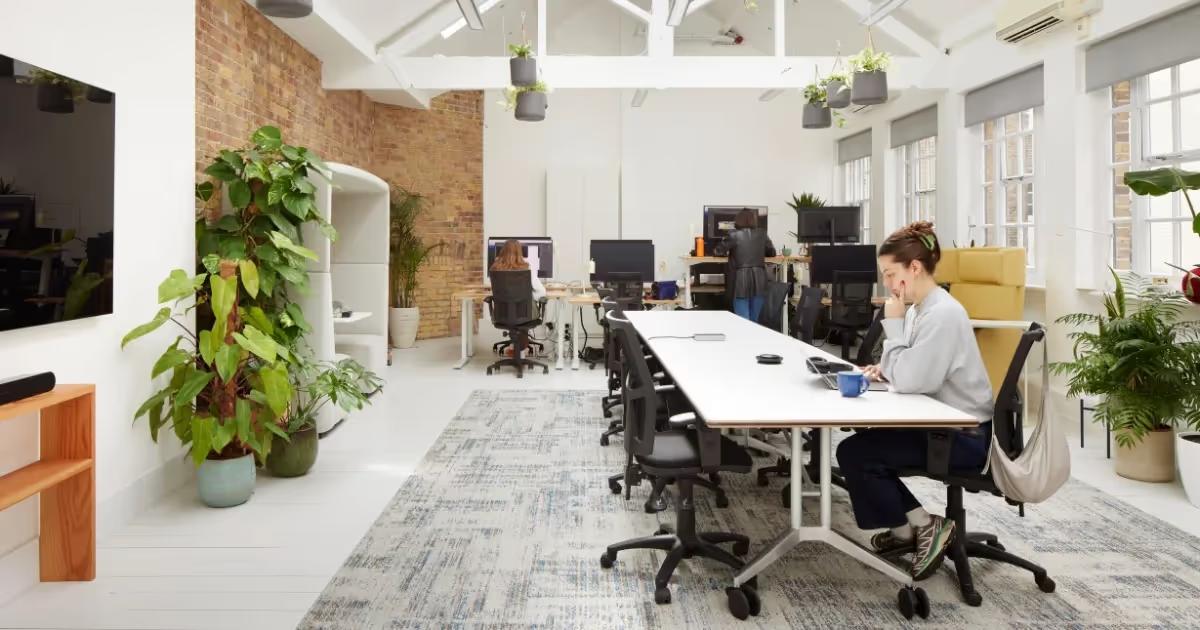At x+why we have a range of creative desk and offices available to suit every need, flexibly. A flexi-space is the latest in office and independent workspace offerings, giving members the option to switch it up or take it down as and when they require. The office of the future is finding that there is no one-size-fits all approach to work, allowing us to explore a wide range of possibilities.
At x+why we have a range of creative desk and offices available to suit every need, flexibly. A flexi-space is the latest in office and independent workspace offerings, giving members the option to switch it up or take it down as and when they require. The office of the future is finding that there is no one-size-fits all approach to work, allowing us to explore a wide range of possibilities below.
{{divider}
The Traditional Desk
{{divider}
Starting with our roots, the traditional desk is the stereotypical assigned desk space available in most offices and cubicle spaces. Benefits of a dedicated work station for an employee include being able to make it your own, and leave belongings over night. However with the advent of an increasing number of shared spaces offering dressing rooms, lockers and storage space, many employees are finding they’d rather not return to the same desk every day, especially given that most of us will spend at least 30% of our lives at work.
{{divider}
Hot Desking
{{divider}
Also known as flexi desks or ‘desk hotelling’, hot desks are unassigned workspace that allow employees freedom of choice when it comes to finding some space to work. Allowing people to move around the office floor or shared workspace enables agility, meaning different daily activities can be better accommodated. Hot desks are usually available in a range of different spaces under one roof, such as quiet areas or creative breakout spaces. Better space utilisation means improved collaboration, with lower overheads.
{{divider}
There’s also no need to worry about the peak-hour rush, with the rise in flexible working also meaning that many employees are choosing to work outside of the traditional 9-5. Improved workplace technology such as desk booking software is also enabling better access to shared resources, allowing a space to be reserved in advance, or providing insights into current occupancy.
{{divider}
People don’t want freedom from work, but just freedom within work - Lewis Mumford, Philosopher
{{divider}

Mobile Working
{{divider}
Today’s workforce are increasingly on the move, with many choosing to travel and work from various different locations. For such individuals, an assigned workspace would be an unnecessary overhead. Instead being able to work from wherever they are, while having access to a chain of meeting rooms and breakout spaces provided by flexible shared workplaces would be more valuable.
{{divider}
Breakout Spaces
{{divider}
The breakout space is an informal space that’s open to everyone, including visitors and partners. This area is usually separate from the usual working area, and may include lounging or kitchen facilities. It serves as a great central hub for people of all industries and backgrounds to get together and network, or make new connections. Designed for anything from a quick lunch to a leisurely conversation, having a breakout area available stimulates spontaneous meetings, collaboration and creativity.
{{divider}
Collaborative working is becoming increasingly prominent as inter-disciplinary approaches become vital in an ever-complex world. It allows teams to communicate, share and develop projects in a more strategic and efficient way. One of the best ways for achieving a ‘collaboration state’ is the modern co-working space, which is designed to motivate and inspire, encouraging employees to share and engage. Promoting this kind of brainstorming and openness improves cognitive flexibility and helps companies remain agile.
{{divider}
Co-working Spaces
{{divider}
Most co-working spaces house an environment that provides a range of different facilities from private office spaces to hot-desking and meeting rooms, under one roof. This caters to a range of different employees - from the salaried, to the independent freelancer and contractor, or those who prefer to work out of the office. They combine most of the benefits of the above, and easily allow you to switch between what you need at various points in time.
{{divider}
A large benefit of co-working spaces, especially in an increasingly remote era, is the feeling of community that they provide. This is especially cohesive if a co-working space has a unifying theme, such as x+why’s mission to make the world a better place using the triple bottom line - people and planet, alongside profit. This allows start-ups and organisations to meet other like-minded individuals, and such spaces are also often designed with employee wellbeing in mind, making it a more holistic and productive place to work.
{{divider}
The communal facilities available in many co-working spaces such as de-stress or games areas, means that the emphasis is on social wellbeing, not just labour efforts, with a complimentary range of events, activities and services on offer to help you feel a little more human, and a little less machine.
{{divider}
Coffice
{{divider}
The ‘coffice’ is the expansion of high street coffee houses that are providing customers with better access to wifi and shared spaces for a flexibly remote place to work. Many workers prefer the laid back atmosphere of the coffice, and enjoy the privacy without necessarily being alone. It also means that they can visit a variety of different spaces in their area, depending on their mood. Coffee houses embracing this option need to make sure they have ample access to cloud-based solutions and mobile technology. Popular with many smaller start-ups and freelancers, overall the coffice is favoured by those seeking increased mobility with lower overheads, and is best suited to solitary work tasks.
{{divider}
Conference Rooms
{{divider}
Conference rooms are available in many modern co-working spaces, but can also be leased independently, depending on the different types of contract available. In some workspaces, access to conference rooms is included in the monthly fee. They provide a quiet and private place for teams to get together and collaborate or pitch, often being serviced with the latest in board-room technology and meeting room facilities. They can also be a great option for smaller, private events.
{{divider}
Connected Offices
{{divider}
Connected office are usually part of a smart building - one with a high level of integrated technology. This is most suited to organisations that prioritise personalised, data-driven solutions, or can be used to assess metrics such as carbon footprint and sustainability. This can help to provide a better employee experience by making it easier to perform tasks such as finding meeting rooms, or managing office facilities in a quick and functional digital capacity, allowing them to focus on innovation and growth. Smart offices use technology such as beacons, sensors and mobile apps to take measurements and manage more menial tasks.
{{divider}
Pods
{{divider}
Pods are standalone units which can serve as work stations or phone boots, enabling privacy and a sound-proof quiet space. Coming in a range of different shapes and sizes, they can help boost concentration, and provide some refuge away form the hustle and bustle of busier spaces, allowing you to dip in and out as you please.
{{divider}
Private Offices
{{divider}
Private offices can be for individuals or teams, depending on the size, and are best suited to those who require more privacy or prefer to keep their members together in one space, especially if working on confidential projects. Many modern workplaces offer hybrid solutions, with private offices that also have access to a shared communal space, for example during leisure hours or after work.
{{divider}
With such a wide range of different types of workspace available, having a hybrid solution that can offer businesses and individuals different services for a variety of needs, at various points in time, means a more cost-effective and agile approach to growth and change. COVID has been a catalyst for many of the changes to the future of work, with most offices needing to be reconfigured to meet social distancing guidelines, as well as needing to prioritise increasing flexibility so that they can continue to evolve as the demand from the environment changes.
{{divider}

.avif)



.png)
.avif)


.avif)


.avif)
.avif)



